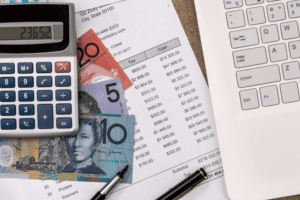
The investor would multiply the number of shares acquired at each price by that price and then add those values together. Lastly, divide the total value by the total number of shares purchased to arrive at the weighted average share price. Let’s say that Helpful Fool Company has repurchased 500 shares in this year’s buyback program. The company now has 5,000 authorized shares, 2,000 issued, 500 in treasury stock, and 1,500 outstanding. The outstanding stock is equal to the issued stock minus the treasury stock. When you buy stock in a company, you buy a percentage ownership of that business.
Understanding Treasury Shares
- In addition to listing outstanding shares or capital stock on the company’s balance sheet, publicly traded companies are obligated to report the number issued along with their outstanding shares.
- Other metrics in which shares outstanding provides useful information include earnings per share (EPS) and cash flow per share (CFPS).
- The shares companies issue are known as authorized shares, which are the maximum number of shares they are lawfully permitted to make available to investors.
- Changes in outstanding shares can influence a company’s stock price, impacting investor sentiments.
- These shares are non-dilutive because they do not include any options or securities that can be converted.
- That’s because the vast majority of its shares are available to the general investing public.
- A share repurchase generates a higher income per share, making each share more valuable.
When a private company needs to raise capital, it undergoes an initial public offering (IPO), selling ownership in itself by distributing shares on a public stock exchange. A company can distribute more shares at a later date if it needs to raise more capital or conversely buy back stock, reducing the shares outstanding. Using weighted average shares outstanding gives a more accurate picture of the impact of per-share measurements like earnings per share (EPS). Note that this method does not account for shares that can be potentially released through various mechanisms, so a weighted average shares outstanding will not tell you the diluted EPS. All companies must report their common stock outstanding on their balance sheet.
- Public companies are required to report their number of shares outstanding in their quarterly and annual disclosures to the Securities & Exchange Commission.
- Shares outstanding is just the amount of all the company’s stock that’s in the hands of its stockholders.
- Public reports in which companies list the total outstanding shares include a quarterly or annual report or a balance sheet.
- The articles of incorporation may authorize one share or millions of shares for a company that doesn’t have an authorized shares restriction.
- Knowing this number is fundamental for various financial analyses and investment decisions.
What is the role of treasury shares in calculating outstanding shares?
Earnings per share is a measure of a company’s valuation, calculated by dividing its profit by the number of shares outstanding. A company’s market capitalization is the current market value of all of its outstanding shares. Outstanding shares outstanding calculation shares differ from treasury shares, which are the shares held by the company itself and which cannot be sold in the open market. Treasury shares plus outstanding shares together form the total number of issued shares.
Floating Stock

Market capitalization is used to compare company sizes, which helps investors evaluate risk and potential growth. In May 2021, technology company Nvidia announced it would initiate a four-for-one stock split—its fifth split since the company went public in 1999—of its common stock. The board of directors decided this would make ownership more accessible to potential investors and employees.
What Bank Does Fidelity Investments Use? Understanding Fidelity’s Banking Relationships
Companies issue different types of shares of equity, the largest and most common type being common shares. Common shares represent ownership interest in a company, and they typically come with voting rights and cash flow (dividend) rights. For example, let’s say a company has 100,000 shares outstanding at the start of the year. Halfway through the year, it issues new shares in the amount of an additional 100,000 shares. A common misconception is that people often think that these shares and treasury shares are the same.

Company B has 50 million shares outstanding, but it recently underwent a 2-for-1 stock split. Preferred stock is a special class of shares that is generally considered a hybrid instrument, including properties of both a debt and equity instrument. Preferred stocks are higher ranking than common stock, but also subordinate to bonds in terms of claim, or rights to their share of the company’s assets. If you’re a market beginner, learning the ins and outs of stocks will help you get started trading, and making money. Read on to learn how to calculate outstanding shares so you can begin mastering the market.

Outstanding shares are the total number of shares that have been issued by the company and are currently held by shareholders. These shares represent the ownership and equity structure of the company. For example, you can calculate a company’s earnings per share (EPS), a common metric used to compare companies’ performances. You can find a https://www.bookstime.com/articles/church-chart-of-accounts company’s earnings per share by dividing the company’s profit by its outstanding shares of common stock. For example, let’s say you want to calculate the weighted average number of outstanding shares for a company over two reporting periods of 6 months each. In the first 6-month reporting period, the company has 100,000 shares outstanding.

How to Calculate the Number of Shares of Common Stock Outstanding

If all these warrants are activated, then XYZ will have to sell 100 shares from its treasury to the warrant holders. Weighted average shares outstanding refers to the number of shares of a company calculated after adjusting for changes in the share capital over a reporting period. The number of shares of a company outstanding is not constant and may change at various times throughout the year, due to a share buyback, new issues, conversion, etc.